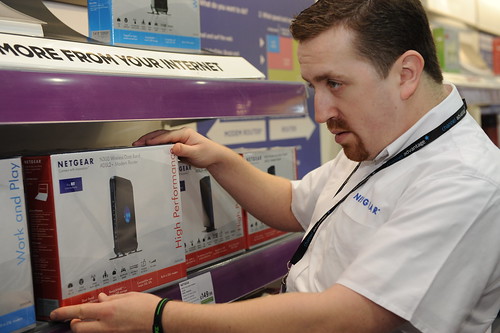During the Black Hat 2007 Conference, a quick display of hacker technology demonstrated just how accumulate -or not- Wi-Fi hotspots are. In the middle of a consulation presentation, session identifiers and cookies were captured from the internet browser of a random user accessing an unsecured wireless signal. The result? The helpless audience member could only look on as his Gmail inbox was suddenly presented for all to see.
Though this was eye-opening for many, it shouldn't be. Wireless networks have been unsecure for years; in 2006 the University of Cambridge surveyed 2,500 entrance points of Wi-Fi networks colse to the University and found 46% were unencrypted (1). An extensive appraisal puts that estimate even higher - colse to 95% (2).
The speculate behind the high rate of unsecured hot spots is simple: "People just admittedly don't care about Wi-Fi security" (1). The general collective doesn't view unsecure networks as a problem. citizen ordinarily offer to share their connection with friends and neighbors, and log on to collective hotspots. Despite the past apathy regarding unsecured hotspots, there is clearly a speculate to be concerned. Connecting to an unsecured network is an invitation for hackers to admittedly snoop straight through people's inbox and cookies, putting an unsuspecting user at risk for data and identity theft.

Convenience of collective Wi-Fi hotspots mistakenly puts protection on the back burner. Few are willing to cut checking their email in the library or a coffee shop due to the possible threat of a hacker. But increasingly, hackers are creating fake entrance points that appear to be real, admittedly deceiving wireless internet users.
"If you're connecting to a hacker's fake entrance Point and all you send and receive is transmitted in clear text with no encryption...Anyone who doubts that this is a problem should ask themselves if they would post their email account passwords ... At the bottom of this blog or go in to an airport and yell out their user account names and passwords as loud as they can. If the answer is no then they should be involved with Hotspot security" (3).
Projected Use
Current Wi-Fi stats state that wireless internet use will only increase. Wireless users are anticipated to grow by over 970 million users in the next three years, bringing the estimate of Americans with wireless subscriptions up to 87% (4). By 2010 wireless internet use will duplicate that of cell phone use (5).
These fantastic figures should generate some unease. The high estimate of unsecure connections increases the possible for data and identity theft, as well as the loss of operate of sensitive information.
Though the new attitude towards Wi-Fi has recently shifted towards concern, the low use of encryption is still a problem. Many wireless network products have included built-in protection features that offer added protection or encryption, but customers struggle with the setup, and the features go unused.
Setting up your own network
When setting up Wi-Fi at home, corollary these guidelines to growth the protection of the network:
- Change the default name of your entrance point (that it does not read Linksys, or Netgear, for example) that does not disclose your name, company, or location
- Make sure your Wi-Fi Protected entrance (Wpa) is enabled or turned on, and check often for protection upgrades
- Change the default router password
- Disable remote entrance via the router Use Mac authentication to validate only a definite list of users allowed to entrance your network
Browse at your own risk
If you connect to a collective entrance point, there are fewer options. simply put, unsecured Wi-Fi use is a major threat. By connecting to an unsecured wireless network, you are a sitting target for any interested hacker. data passed straight through unsecured web pages is accessible. Is it worth sacrificing all the data within your inbox just to check your email?
Although there are problems created by unsecured wireless networks, options are available to protect emailed documents. It's possible to generate secure, encrypted documents that are invulnerable to hackers, when accessed over a wireless network. If you plan to work on an unsecured entrance point, using extra protection on sensitive files will help in guarding against the vulnerabilities created by using a hotspot.
End Notes:
1). Espiner, Tom. "Does Wi-Fi protection matter?" Cnet News. June 27, 2007. http://news.com.com/2100-1029_3-6088741.html
2). Acohido, Byron. "Public Wi-Fi use raises hacking risk." Usa Today. August 10, 2007. Http://www.usatoday.com/tech/wireless/2007-08-06-wifi-hot-spots_N.htm>
3). Ou, George. "A accumulate Wireless Lan hotspot for anonymous users." Real World It. July 18 2007. http://blogs.zdnet.com/Ou/?p=587
4). It Facts. Http://www.itfacts.biz/index.php?id=C0_19_1>
5). "Statistics: E-Business Trends." http://www.shop.org/learn/stats_ebizz_wireless.asp>
Unsecured Wi-Fi entrance - Browse At Your Own Risk